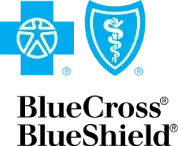
Heroin Addiction Treatment
As a result of heroin intake, individuals may experience extreme euphoria and high, which is due to the drug’s affection on the brain’s reward system. Only two to three weeks of its usage may evolve addiction that needs to be treated.
Scroll
Breaking free from heroin dependence requires a carefully structured approach, beginning with medical detoxification – the essential first phase of heroin addiction treatment. This crucial initial stage serves as the gateway to lasting recovery by helping the body safely eliminate harmful substances while managing potentially severe withdrawal symptoms.
Self-detox attempts often fail due to:
- Physical risks including dehydration and cardiovascular stress
- Psychological challenges like intense cravings and mood disturbances
- High relapse potential when symptoms become unbearable

What Is Heroin Addiction Treatment?
Effective treatment for heroin dependence requires a customized plan that tackles the condition from multiple angles. As an extremely potent opioid, heroin creates profound changes in brain function that demand specialized care approaches.
Quality rehabilitation addresses three critical areas simultaneously:
Neurochemical Rehabilitation
Medical interventions help recalibrate the brain’s chemistry using specific medications that ease the transition to sobriety. These treatments work to normalize the overstimulated reward pathways while minimizing painful withdrawal effects.
Behavioral Reconstruction
Therapeutic techniques focus on identifying and modifying the thought patterns and emotional responses that drive substance use. Through various counseling methods, individuals learn practical skills to manage triggers and stressors without relapse.
Lifestyle Reformation
Sustainable recovery requires building new routines and support networks. Comprehensive programs incorporate practical assistance with employment, housing, and social connections to create a stable foundation for drug-free living.
What Are the Treatments for Heroin Use Disorder?
When it comes to heroin addiction treatment, there’s no universal solution that works for everyone. The path to recovery varies significantly based on multiple personal factors that must be carefully evaluated before beginning treatment.
Key Factors That Shape Your Treatment Plan
- Depth of Dependence
- Occasional users vs chronic daily users
- Quantity and frequency of heroin use
- History of previous quit attempts
- Duration of Use
- Short-term addiction (under 1 year)
- Long-term dependency (multiple years)
- Periods of abstinence and relapse
- Mental Health Considerations
- Co-existing depression or anxiety
- Trauma history or PTSD
- Other substance use disorders
- Personal Life Circumstances
- Stable housing situation
- Employment status
- Family/social support network
- Legal or financial pressures
While programs should be tailored, these science-backed methods form the foundation of effective heroin addiction treatment:
Medication-Assisted Treatment (MAT) for Heroin Addiction
Modern addiction medicine has revolutionized heroin treatment through an innovative approach that blends science and support. Medication-Assisted Treatment (MAT) stands at the forefront of this transformation, offering a lifeline to those trapped in the cycle of opioid dependence. Unlike traditional methods that rely solely on willpower, MAT provides a scientifically validated solution that works with the body’s chemistry to facilitate recovery.
The Three Primary MAT Medications
Methadone
As a full opioid agonist, methadone:
- Provides 24-36 hours of symptom relief from a single dose
- Eliminates withdrawal symptoms when properly dosed
- Reduces or eliminates heroin cravings
- Blocks the euphoric effects of other opioids
Patients receive methadone through strictly regulated opioid treatment programs (OTPs) with daily observed dosing initially, progressing to take-home doses as recovery stabilizes.
Buprenorphine (Suboxone, Zubsolv)
This partial opioid agonist offers several advantages:
- Lower abuse potential due to ceiling effect
- Can be prescribed in office-based settings
- Often combined with naloxone to prevent misuse
- Allows patients to focus on recovery rather than withdrawal
Recent innovations include extended-release buprenorphine formulations (Sublocade) that provide month-long medication coverage via injection.
Naltrexone (Vivitrol)
As a pure opioid antagonist, naltrexone:
- Completely blocks opioid receptors
- Prevents relapse by making heroin use ineffective
- Available in monthly injectable form for better compliance
- Ideal for patients who have completed detox
Heroin Detox
Modern heroin detoxification is grounded in neuroscience, recognizing opioid dependence as a chronic brain disorder. When heroin use stops abruptly, the brain’s opioid receptors—accustomed to artificial stimulation, trigger a cascade of withdrawal symptoms as the nervous system struggles to regain balance.
Research shows that medically supervised detox significantly improves outcomes by:
- Stabilizing brain chemistry with FDA-approved medications
- Reducing relapse risk during the critical withdrawal period
- Preventing medical complications like dehydration or cardiac stress
Beyond traditional opioid agonists (methadone, buprenorphine), new pharmacological approaches are transforming detox:
Lofexidine (Lucemyra)
- The first non-opioid medication specifically approved for opioid withdrawal
- Works by calming the overactive sympathetic nervous system
- Reduces severity of withdrawal by up to 50% in clinical trials
Buprenorphine Protocols
- Micro-dosing (Bernese Method): Allows patients to start treatment while still using
- Rapid detox: 5-7 day outpatient protocols with decreasing doses
Adjuvant Therapies
- IV NAD+ therapy: Helps repair opioid-damaged neural pathways
- Medical cannabis (in some states): For nausea and pain management
Behavioral Therapy
Modern addiction treatment recognizes that overcoming heroin dependence requires addressing both the body and mind. While pharmaceutical solutions help restore physical balance, innovative psychological approaches focus on reshaping thought patterns and social behaviors. Today’s most effective programs combine neurological science with behavioral modification techniques to create lasting change.
Neuroplasticity-Based Therapies
Memory Reconsolidation Therapy
- Disrupts the emotional intensity of drug-related memories during recall sessions
- Combines guided recall with cognitive interference tasks
- Reduces cue-induced cravings by up to 60% in clinical trials
Transcranial Magnetic Stimulation (TMS)
- Targets the prefrontal cortex to strengthen impulse control
- 20-30 sessions alongside traditional therapy
- Demonstrated 40% higher abstinence rates vs. standard care
Virtual Reality Exposure Therapy (VRET)
- Recreates high-risk environments (parties, drug neighborhoods) in safe settings
- Teaches real-time craving management through biofeedback
- 3x greater retention of coping skills vs. talk therapy alone
AI-Powered Cognitive Training
- Adaptive programs that rebuild decision-making neural networks
- Real-time craving prediction algorithms
- Personalized cognitive exercises based on relapse patterns
Maintenance vs. Detox: Which Is Right for You?
When considering treatment for heroin dependence, the choice between maintenance therapy and detoxification depends on your individual needs, medical history, and recovery goals. Both approaches use medication-assisted treatment (MAT) to manage withdrawal and cravings, but they differ in long-term strategy. Below, we break down the science-backed benefits and considerations for each option.
- Maintenance Therapy
How It Works:
You switch from heroin to a heroin substitute (e.g., methadone or buprenorphine) and remain on a controlled dose.The medication stabilizes brain chemistry, reducing cravings and withdrawal symptoms.
Who It’s Best For:
- Individuals with chronic, severe opioid dependence
- Those at high risk of relapse without ongoing support
- People who need time to rebuild their lives before full abstinence
- Detoxification
How It Works:
You transition from heroin to a substitute (methadone/buprenorphine) but taper off completely over weeks or months. The goal is full abstinence after withdrawal.
Who It’s Best For:
- Those with mild to moderate dependence
- Individuals with strong social support and relapse prevention plans
- People who prefer not to remain on medication long-term
There is no “one-size-fits-all” solution—medically supervised treatment plans should be personalized. Research shows that maintenance therapy saves more lives in severe cases, while detox can work for highly motivated individuals with strong aftercare.
Life After Detox: What Comes Next?
Completing detox is a significant achievement, but it’s just the beginning of your recovery journey. The real work starts when you transition back to daily life without relying on substances. This phase requires patience, support, and practical strategies to maintain sobriety when challenges arise.
Understanding Your Brain in Recovery
Heroin addiction fundamentally alters your brain chemistry, particularly the reward system that regulates pleasure and motivation. During early recovery, it’s common to experience:
- Neurochemical imbalances that cause mood swings, anxiety, or emotional numbness
- Intense cravings triggered by people, places, or stressful situations
- Sleep disturbances as your body adjusts to functioning without substances
These challenges are temporary but require active management. Research shows it takes 6-12 months for dopamine receptors to fully recalibrate, which is why ongoing support is crucial.
The Recovery Timeline: What to Expect
First 30 Days (Acute Phase)
This is often the most physically and emotionally demanding period. You may experience:
- Fatigue and low energy as your body heals
- Difficulty experiencing pleasure from everyday activities
- Strong urges to use when facing stress or triggers
1-6 Months (Stabilization Phase)
Progress becomes noticeable, but vulnerability remains:
- Cravings become less frequent but can still feel intense
- Emotional regulation improves gradually
- Social and environmental triggers require conscious management
6+ Months (Maintenance Phase)
While life becomes more manageable, this is when many people become complacent:
- The risk of relapse shifts from physical cravings to psychological factors
- Rebuilding purpose and identity becomes essential
- Ongoing support systems prevent regression
Practical Steps for Supporting a Loved One
Watching someone you love battle heroin addiction can feel overwhelming. You want to help, but you might worry about saying the wrong thing or making things worse.
Here’s how to make a real difference—without burning out or enabling the addiction.
- Learn the Difference Between Helping and Enabling
Many well-meaning families accidentally prolong addiction by “helping” in ways that keep the cycle going.
- Real help: Driving them to therapy, researching heroin rehab options, or just listening without judgment.
- Enabling: Giving them money, covering up missed responsibilities, or pretending their drug use isn’t a problem.
Ask yourself: “Is this making recovery easier—or just making addiction more comfortable?”
- Set Clear, Non-Negotiable Boundaries
Vague pleas like “Please stop using” rarely work. Instead, try:
- “I won’t lend you money, but I’ll drive you to a job interview.”
- “You can’t stay here if you’re using, but I’ll help you find treatment.”
- “If you overdose, I’ll call 911—no exceptions.”
Why it works: Boundaries remove the safety net of addiction while keeping the door open for recovery.
- Be Prepared for Relapses (Without Falling Apart)
Relapse is common, but having a plan prevents chaos.
- Keep naloxone (Narcan) at home and learn how to use it.
- Save key contacts: Their counselor, a local heroin rehab clinic, and a crisis hotline.
- Decide in advance what you’ll do if they use again, so emotions don’t cloud your judgment.
- Take Care of Yourself, This Isn’t Your Battle to Fight Alone
You can’t support someone if you’re running on empty.
- Join a support group (Nar-Anon, Al-Anon) to connect with others who understand.
- See a therapist who specializes in addiction—for your own mental health.
- Keep living your life. Don’t cancel plans or neglect your needs to “monitor” them.
Heroin Addiction Help
You deserve help. Call today to explore your recovery options.












